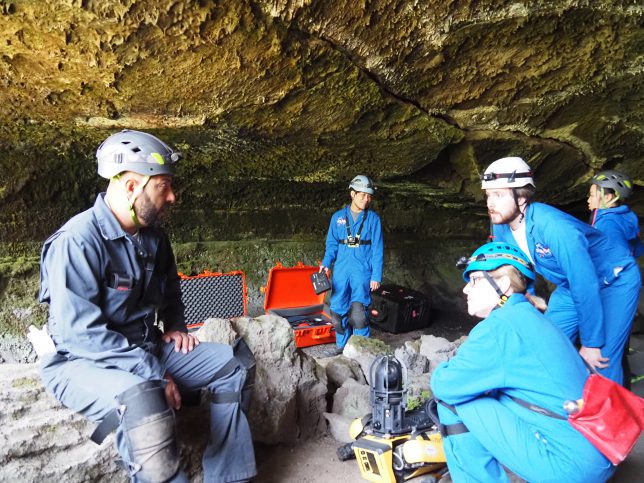By Reilly Sleater and Ryan Kirby

Don’t we already have robots on other planets?
Of course, as any space enthusiast knows, humans have been sending robots to other planets for a long time now—from the Apollo-era Lunar Roving Vehicles to modern-age Martian rovers. So, naturally, you may be wondering what all of our fuss is about regarding the Boston Dynamics Spot Robots that we are using to explore caves here on Earth as an analog to martian cave exploration. Shouldn’t we use a rover if we wanted a true martian analog? Well, we tried that in the past and ultimately have adopted legged robots as more ideal navigators for difficult cave-like terrain.
Legged robots have numerous advantages over traditional wheeled robots, especially when it comes to exploring difficult terrain. For example, legged robots, like the Spot robots have better mobility, enhanced terrain adaptability, and can more easily navigate small areas. We want to explore all of the reasons that we advocate for legged robots in caves in another blog post, but for now, we want to talk about the difficulties of sending a Spot robot to the Moon or Mars.

So, why haven’t we sent any legged robots there yet?
Luckily Chris Patterson took some time to explain this on our Instagram account, but we wanted to share a bit more here. There are several reasons that Spot robots aren’t ready for space yet, including thermal regulation, solar radiation, and movement calibration.
First off, how do we cool the robotic components down (i.e., thermal regulation)? Most people are under the impression that space is very cold, and for the most part, it is; but in direct sunlight, it can also be incredibly hot. It is imperative that the robotic components are kept cool enough to function—avoiding all and any irreversible damage from heat damage.
Next, space is a vacuum and unlike Earth, there is no atmosphere or magnetic field to protect either the Moon or Mars from extremely damaging radiation, and robotic components would short out if exposed to radiation. Lastly, the way our Spot robots are currently calibrated to walk would not work or be effective on lunar or martian surfaces. Currently, Spot is way too powerful for the lunar surface. For example, if it were to be placed onto the Moon and take a step, it would most likely jump into the air and never come back down. Additionally, the Spot robot would most likely not have enough grip on surfaces other than Earth. This would mainly be due to the fine nature of the dust on the surface of the moon and Mars.
Well, I’m convinced—let’s send one!
Unfortunately, fitting a Spot robot to survive these harsh conditions would cost millions of dollars today, and we would need some technological advances to make it more feasible. While our Spot robots are not quite ready for extra-terrestrial navigation and exploration, we hope that our work using these robots here on Earth will encourage more research and investments into extra-terrestrial legged robots and better prepare us for when we are ready to send them to our neighboring planets.
